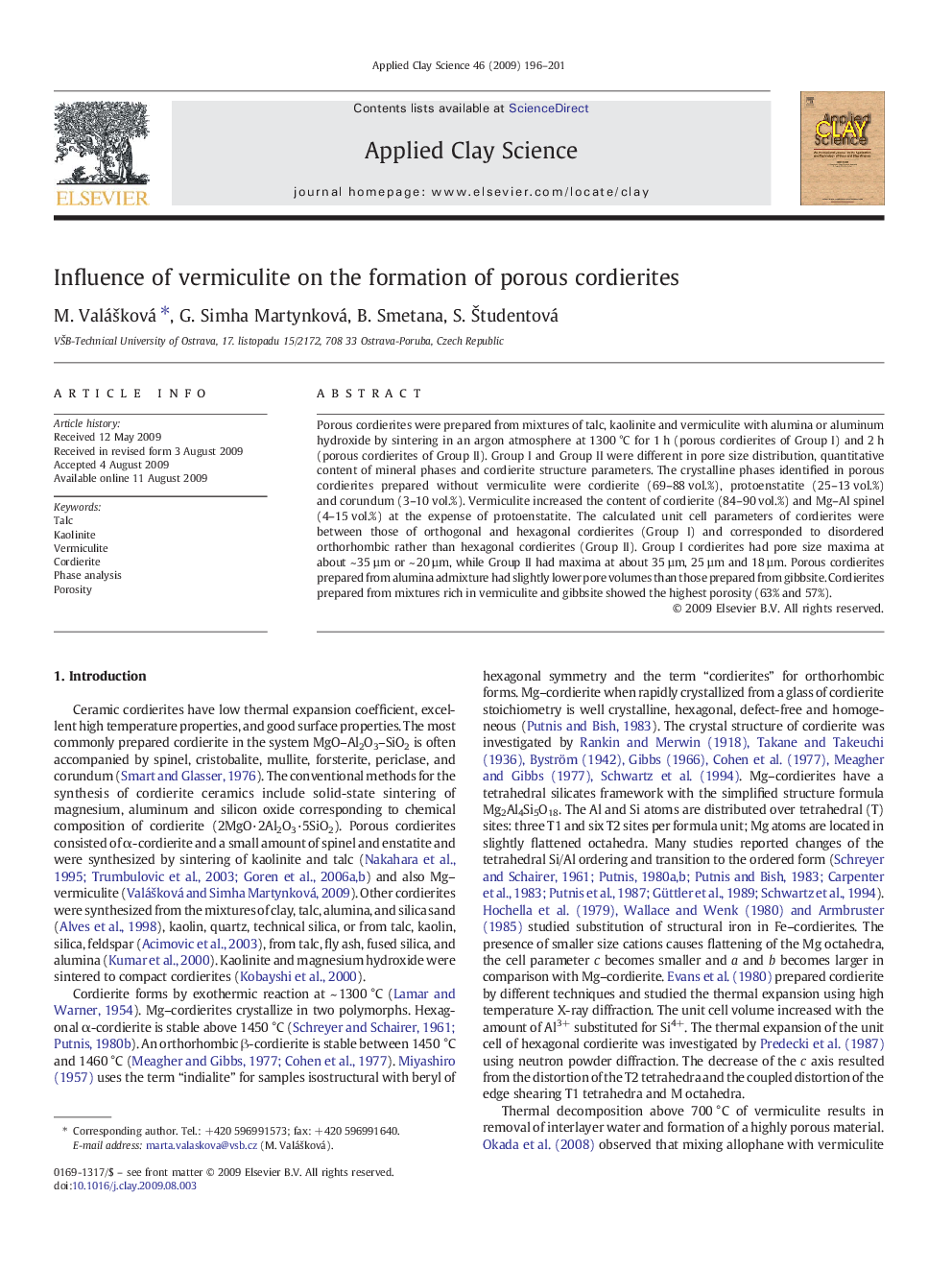| Article ID | Journal | Published Year | Pages | File Type |
|---|---|---|---|---|
| 1695905 | Applied Clay Science | 2009 | 6 Pages |
Porous cordierites were prepared from mixtures of talc, kaolinite and vermiculite with alumina or aluminum hydroxide by sintering in an argon atmosphere at 1300 °C for 1 h (porous cordierites of Group I) and 2 h (porous cordierites of Group II). Group I and Group II were different in pore size distribution, quantitative content of mineral phases and cordierite structure parameters. The crystalline phases identified in porous cordierites prepared without vermiculite were cordierite (69–88 vol.%), protoenstatite (25–13 vol.%) and corundum (3–10 vol.%). Vermiculite increased the content of cordierite (84–90 vol.%) and Mg–Al spinel (4–15 vol.%) at the expense of protoenstatite. The calculated unit cell parameters of cordierites were between those of orthogonal and hexagonal cordierites (Group I) and corresponded to disordered orthorhombic rather than hexagonal cordierites (Group II). Group I cordierites had pore size maxima at about ~ 35 µm or ~ 20 µm, while Group II had maxima at about 35 µm, 25 µm and 18 µm. Porous cordierites prepared from alumina admixture had slightly lower pore volumes than those prepared from gibbsite. Cordierites prepared from mixtures rich in vermiculite and gibbsite showed the highest porosity (63% and 57%).
